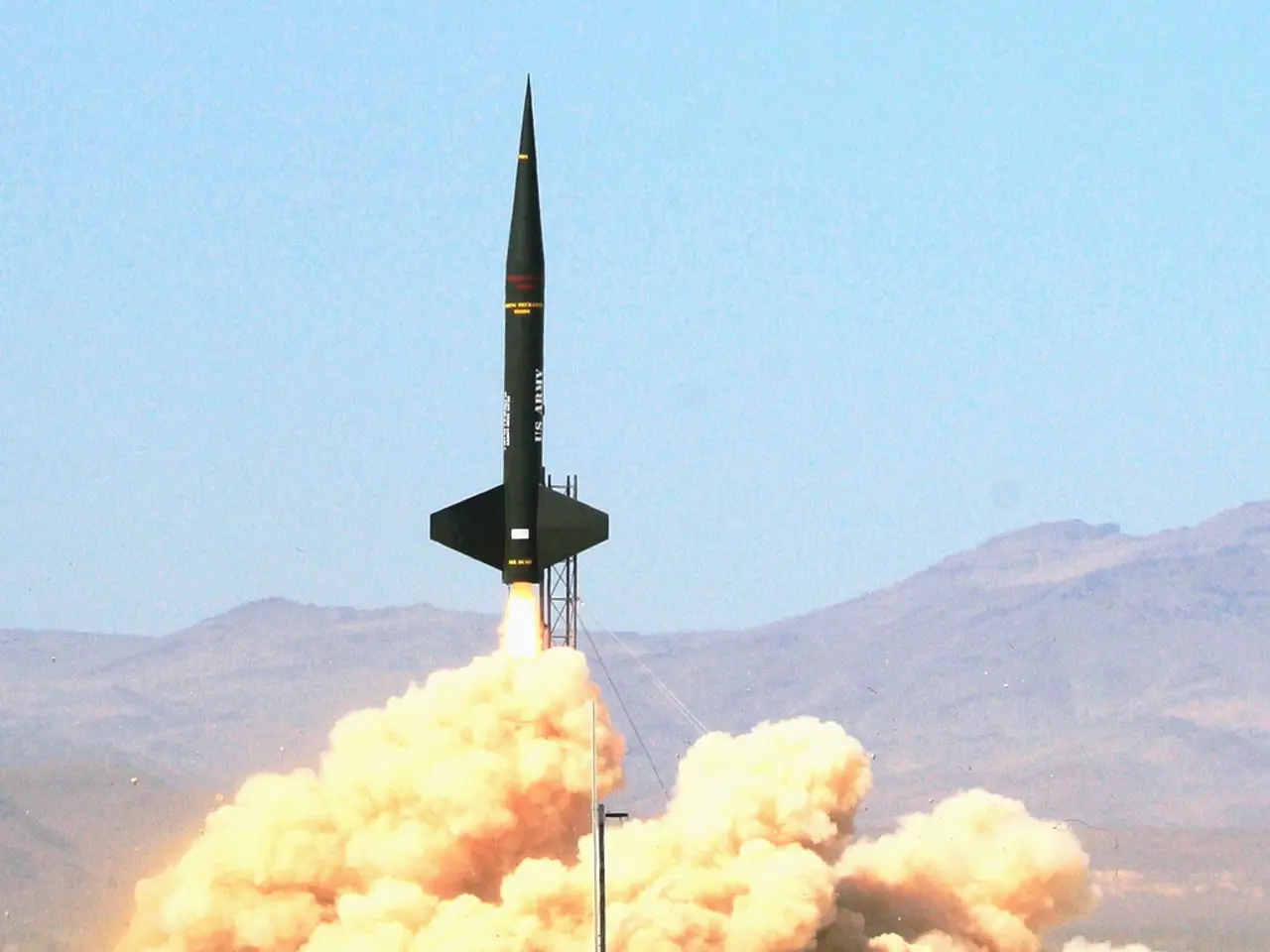Ethereum Transition: Essential Facts Explained
Get your Trinity Audio player revved up.. Let's Go!
Table of Contents
"Hop on, it's a wild ride ahead." - Vitalik Buterin
The Merge, the crypto world's most epic software upgrade yet, has finally landed. It's the ticket for Ethereum to level up and become a scalable infrastructure that's ready for mass adoption. After years of development, delays, and anticipation, the Ethereum network (the second-largest cryptocurrency by market value) is now all set to transition to its next phase. The Merge represents the atomic fusion of Ethereum's Execution Layer, or Mainnet, with the Beacon Chain, its Consensus Layer.
Are you confused about what this Merge thingy is, what it means, and why it's crucial? Welcome to the club! We got the scoop, and we're here to fill you in.
What the heck is The Ethereum Merge?
Before we dive into the juicy details about the upgrade, let's clarify what The Ethereum Merge exactly is. The Merge unites Ethereum's Execution Layer (Mainnet) and the Beacon Chain. The Merge symbolizes the migration of Ethereum's blockchain from the currently used Proof-of-Work (PoW) consensus protocol to the more energy-friendly Proof-of-Stake (PoS). This migration removes the need for energy-gobbling mining and replaces it with a system where validators confirm and store transactions on the blockchain instead of miners. Anyone who has at least 32 ETH to stake (or pledge) to the network can become a validator, and if you don't have that much, you can still participate via staking pools or cryptocurrency exchanges.
Post-Merge, you can expect these changes:
- Energy consumption by node validators will decrease by a whopping 99.95%.
- The network will gain the ability to add additional scaling solutions such as sharding, which will be worked on in the next stage - The Surge.
- Transactions will be confirmed faster.
- Security will be increased due to client diversity.
- Decentralization might rise as lowering the hardware requirements for node operators is anticipated.
- Ethereum will become a deflationary asset.
Merge with Mainnet
The Ethereum production blockchain, where the real, gritty transactions go down, is called Mainnet. The PoW consensus was employed to validate transactions and secure the Ethereum Mainnet from day one until the Merge. The Merge brings together the current Ethereum Mainnet and the new Ethereum Beacon Chain as one unified chain. Launched as a separate blockchain from the Ethereum Mainnet on December 1, 2020, the Beacon Chain was a separate blockchain with its own PoS consensus layer. Its primary duty was agreeing on active validators, and their account balances, but it didn't process Mainnet transactions.
Following thorough testing, it was time for the Beacon Chain to agree on real-world data. Let's break it down: the Beacon Chain has functioned as a sort of test track for Ethereum 2.0.
The Paris upgrade signaled the end of Ethereum Blockchain mining and the shift from PoW validation to PoS validation. When the execution layer reached the Terminal Total Difficulty (TTD), a Beacon Chain validator created the next block using PoS. Once the Beacon Chain completed this block, the Merge transition was declared complete.
Now, the Beacon Chain acts as the consensus engine for all network data, including execution layer transactions and account balances, after the Merge. This change has some major implications for the network, but the following are critical considerations:
- No more Ethereum mining.
- No loss of history.
- Your funds will stay safe.
Why the heck is The Merge important?
The significance of The Merge for Ethereum is enormous. Blockchains typically adhere to the principle of decentralization, allowing them to be permissionless, trustless, and more secure because of their resistance to single points of failure. However, the massive energy consumption of leading cryptocurrencies like Bitcoin and Ethereum, which rely on the PoW consensus mechanism, has sparked widespread criticism. In addition, PoW has security and cost-effectiveness issues. A PoW blockchain is harder to scale for multiple reasons:
- The number of transactions a block can validate in a single block is limited.
- Blocks have to be mined at a consistent rate.
This classical scalability trilemma has kept pre-merge Ethereum from overcoming it. Overcoming the scalability trilemma is crucial for Ethereum as it strives to be a blockchain for the masses. Post the Merge, it's one step closer!
Let's crash the party after The Ethereum Merge
The reduction in power consumption is the most significant change brought by the Ethereum upgrade. The second significant change is the reduction of ETH issuance via rewards for network maintenance. However, transactional speed on the ETH network will not skyrocket right away. Previously, mining a single block of ETH took about 13 seconds. This will be reduced to 12 seconds after the Merge. But as PoS allows for increased scalability, its impact on the developer community will be substantial.
The Ethereum upgrade doesn't completely resolve the scalability trilemma, but it does set the stage for 'The Surge, The Verge, The Purge, and The Splurge.' These efforts are aimed at making Ethereum faster, safer, and more decentralized. The Merge represents 55% progress towards greater scalability and sustainability.
How The Merge affects you and your ETH
With the switch to PoS, annual ETH issuance will be approximately reduced by 90%. If supply and demand hold true, the price of ETH will likely rise. Predicting long-term impacts is tough, but experts believe the Ethereum upgrade may cause prices to surge in the short term.
Following the Merge, Ethereum operates on a PoS blockchain, with the PoW chain becoming obsolete. A difficulty bomb makes chain mining unappealing. However, the Ethereum Merge isn't expected to instantly speed up the network or lower transaction costs. Investors might see the benefits of the Ethereum Merge in the future.
Misconceptions about The Merge
Misconception #1: "Running a non-validator node requires staking 32 ETH."
Contrary to popular belief, staking 32 ETH is only necessary to become a validator on Ethereum's Proof-of-Stake network. Running a non-validator, full node is possible without this requirement. This involves syncing a self-verified copy of the Ethereum blockchain under both the Proof-of-Work (retired) and Proof-of-Stake consensus mechanisms. Running such nodes is essential for the network's health and decentralization as it ensures a more robust, distributed network infrastructure.
Misconception #2: "The Merge failed to reduce gas fees."
Surprisingly, the gas fees on Ethereum haven't changed post-Merge. Gas fees are based on network demand and have nothing to do with the Merge itself. The Merge primarily changes the consensus mechanism, and network capacity or throughput parameters remain unaffected.
Misconception #3: "Transactions were accelerated substantially by The Merge."
A common misconception is that transaction speed on layer 1 has significantly increased after the Merge. Transaction speed can be measured in various ways, such as the time it takes to be included in a block or the time it takes to be confirmed. Neither of these factors has noticeably changed due to the Merge. The Merge solely impacts the consensus mechanism and doesn't affect transaction speed on layer 1.
Misconception #4: "Stakers will be able to withdraw their stakes immediately after The Merge."
Stakers are yet to be able to withdraw their staked ETH after the Merge. Staked ETH and staking rewards remain locked and inaccessible. Withdrawals are expected to become possible following the upcoming Shanghai upgrade.
Misconception #5: "Validators will not receive any liquid ETH rewards till the Shanghai upgrade, when withdrawals are enabled."
Although withdrawals will not be possible until the Shanghai upgrade, validators will have immediate access to the fee rewards or MEV (Miner Extractable Value) they earn during block proposals. These rewards are credited to the validator's non-staking account.
Misconception #6: "All validators will exit at once when withdrawals are enabled in the Shanghai upgrade."
While withdrawals will become available after the Shanghai upgrade, the base protocol includes mechanisms to prevent mass exits. Specifically, full validator exits are rate-limited; only six validators are allowed to exit per epoch. This rate-limiting is crucial to preserve network stability and security, preventing sudden reductions in the number of active validators. Additionally, balances above 32 ETH do not accrue additional rewards, giving validators an incentive to manage their staked ETH efficiently.
What happened to Eth2?
Up until the Merge, it was previously planned that after the Merge, the existing PoW Ethereum chain (Eth1) would be deprecated via the difficulty bomb. Users and applications would migrate to Eth2, a new PoS Ethereum chain. However, Eth1 and Eth2 merged into a single chain after the Merge. As a result, distinguishing between the two Ethereum networks is no longer necessary. The Ethereum Foundation has removed all references to Eth2.
The original Ethereum blockchain, formerly referred to as Eth1, has been rebranded as the Execution Layer. This layer is now responsible for handling transactions and executing smart contracts. Meanwhile, the newer PoS chain, previously called Eth2, is now called the Consensus Layer. This layer is responsible for achieving network consensus and securing the blockchain.
Relation between Ethereum Upgrades
The Ethereum upgrades include the Beacon Chain, the Merge, and the Surge, Verge, Purge, and Splurge. After these upgrades are implemented, the new Ethereum blockchain is expected to be more scalable, secure, and resilient while still maintaining its decentralized nature. The Ethereum upgrades are all intertwined in some way:
1. The Merge and Sharding
The splitting of a blockchain into smaller, more manageable segments is known as sharding. Ethereum's sharding plans have shifted to determining the most efficient way to distribute the burden of storing compressed data from rollup contracts. This will allow for exponential network capacity growth. To achieve this goal, it was inevitable that the Proof-of-Stake mechanism would first be implemented. Therefore, the Merge occurred first, enabling more efficient sharding.
2. The Merge and Shanghai Upgrade
The Ethereum Merge did not include certain anticipated features, such as the ability to withdraw staked ETH. This was done to streamline the transition to PoS and maximize focus on a successful transition. The Shanghai upgrade is scheduled to address three key Ethereum issues: it will allow modification of the Ethereum Virtual Machine (EVM) object format, enable stakers to withdraw from the Beacon Chain, and reduce the L2 fee.
Conclusion
Though the Merge was a significant achievement, many more upgrades are in store for the Ethereum blockchain. The flawless execution of the Merge represents an incredible technical feat. As we move forward, we'll be able to see the impact of the Merge on the crypto world. As Steven Goldfeder, co-founder and CEO of Offchain Labs, said, "One of the beauties of the Merge is that Ethereum has a long technical roadmap, but it'll never be complete."
Getting your Trinity Audio player ready...
The transition of Ethereum to a Proof-of-Stake (PoS) consensus mechanism, known as The Merge, will make it possible for technology to play a crucial role in the reduction of energy consumption in the financial sector.
Post-Merge, the decrease in energy consumption by node validators will open up opportunities for technology to be integrated with financial systems, promoting more sustainable solutions to validate transactions instead of relying on energy-gobbling mining.




